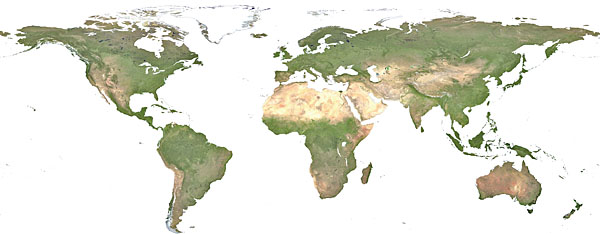

| |
| World Roundup | Volume 58 Number 1, January/February 2005 |

North America
Oregon
A jury deadlocked over charges that looter Jack Lee Harelson tried to hire a hit man to murder four people--including the judge--involved in his 1996 conviction for stealing Native American artifacts and mummified human remains from a cave in the Nevada desert.
New Mexico
Preliminary excavations at the site of a new civic center in Santa Fe are lending credence to the theory that the city is built on the remains of a Pueblo Indian settlement. Multiple pit houses and ceramics dating back 700 to 800 years have been found at the site, according to a state archaeologist. Reports of human remains are as yet unconfirmed.
South Padre Island, Texas
The remains of a 5,000-year-old fishing camp, which include shell tools and a fish ear bone, will help us better understand the cultures and environment of the ancient Rio Grande Valley, say researchers.
Washington
A pit containing 14 skulls was found at the site of a Klallam village that may be more than 1,700 years old. The site in Port Angeles is currently being used by the state Department of Transportation as a construction yard.
South America
Bolivia
New digs now show that the 650-square-foot Akapana pyramid at Tiwanaku, once believed to be a modified hill, is entirely man-made.
Peru
The Inca burned their own temple and removed bodies from graves in Pambokancha, a religious center some 20 miles from their capital of Cuzco, lest they fall into Spanish hands. Excavations also revealed "closing ceremonies" involving burned offerings and smashed pottery in more than 70 of the town's buildings.
Europe
Austria
The world's oldest wooden staircase has been discovered in a Bronze Age salt mine in the town of Hallstatt. The 3,000-year-old pine-and-spruce staircase survived because the microorganisms that decay wood do not exist in salt mines, say researchers.
| England A scrap of gold foil found in a Norfolk garden turned out to be an ancient lamella, or magical charm, one of no more than a few dozen known from anywhere in the Roman Empire. It invokes the protection of the eastern god Abraxas for a soldier from the Rhineland. | ![[image]](thumbnails/england.gif) (©The British Museum) [LARGER IMAGE] |
Rome
The UN announced the creation of the "Blue Berets," a rapid-reaction force that could be deployed at the request of countries where cultural heritage is threatened by war or natural disaster.
Africa
South Africa
A new national park showcases the 11th-14th century A.D. Mapungubwe kingdom, rediscovered by archaeologists in the 1930s.
Near & Middle East
| Iran More than 36 ancient skeletons, most of them children, have been recovered from within the surviving walls of the Bam citadel. Archaeologists performing salvage excavations at the southern city, which was almost completely destroyed in an earthquake in 2003, are stumped by the finds. | ![[image]](thumbnails/iran.gif) (AP Photo/Hasan Sarbakhshian) [LARGER IMAGE] |
Israel
Humans may have been baking long before they were sowing grain, according to finds from a 23,000-year-old hut at the Ohalo II site on the southwestern shore of the Sea of Galilee. Starch granules of both wild wheat and barley were found in a stone used to grind grain, and barley was also found in a hearthlike oven at the site, established some 10,000 years before either grain is known to have been domesticated.
Asia & the Pacific
China
Ongoing work in China guarantees a stream of interesting finds. See "Focus on China."
Fiji
A fragment of pottery featuring the face of a bearded man has pushed back the settlement of the island another 200 years, say archaeologists. The pottery piece is believed to have been made by the Lapita people, who populated Polynesia. The fragment, one of 60 found near Natadola in western Fiji, was carbon-dated to 3,260 years ago.
Indonesia
The discovery of a dwarf hominid species that coexisted alongside Homo sapiens until 13,000 to 12,000 years ago has turned the paleoanthropological world on its head. See "Flores Flip-Flop?"
Mongolia
Archaeologists may have discovered a shrine dedicated to Genghis Khan in a village 150 miles from the capital of Ulan Bator. If the identification is correct, scholars speculate that the tomb of the Mongol leader may lie nearby.

|
For more news, see "From the Trenches." |
© 2005 by the Archaeological Institute of America archive.archaeology.org/0501/newsbriefs/world.html |
Advertisement

Advertisement






